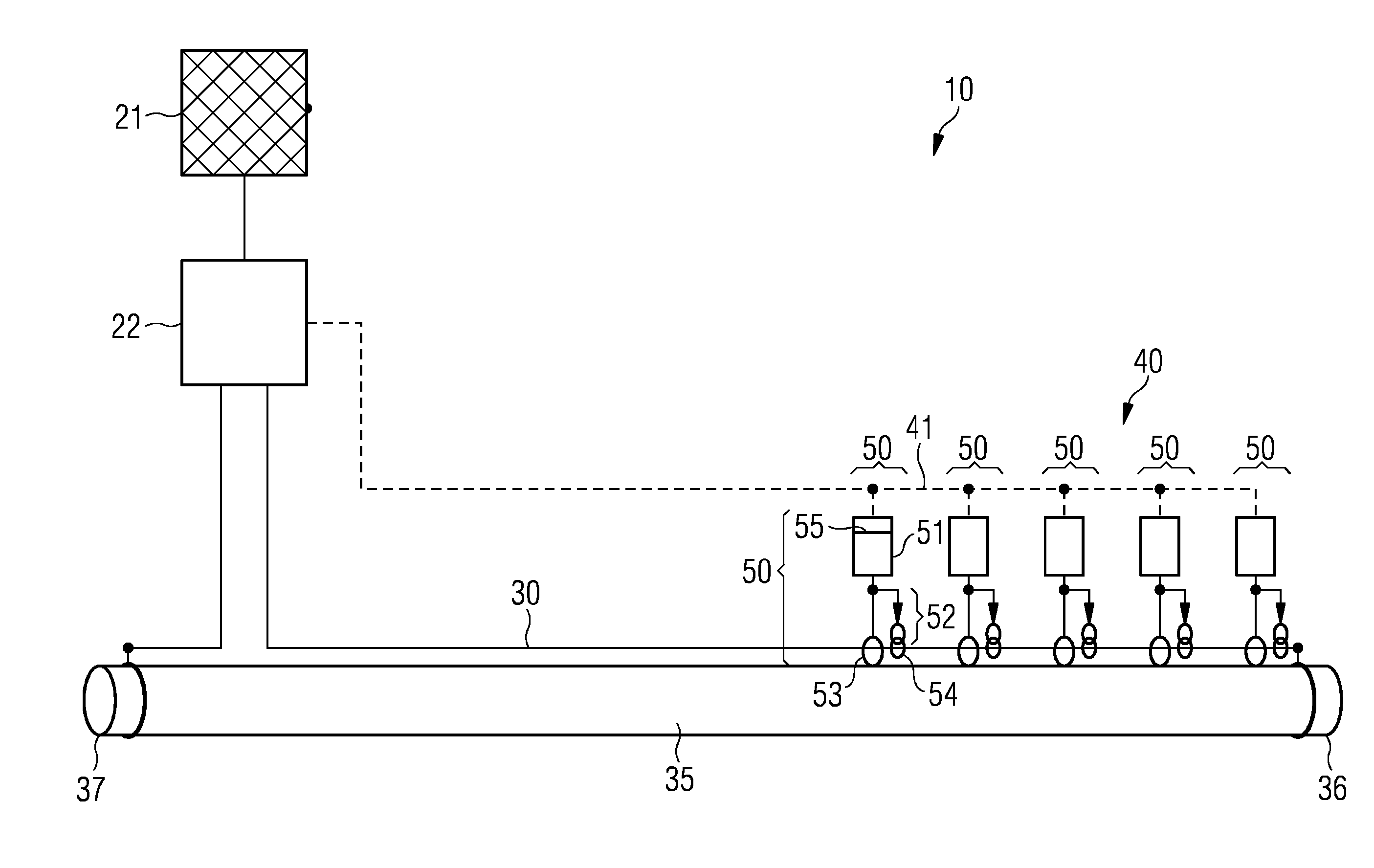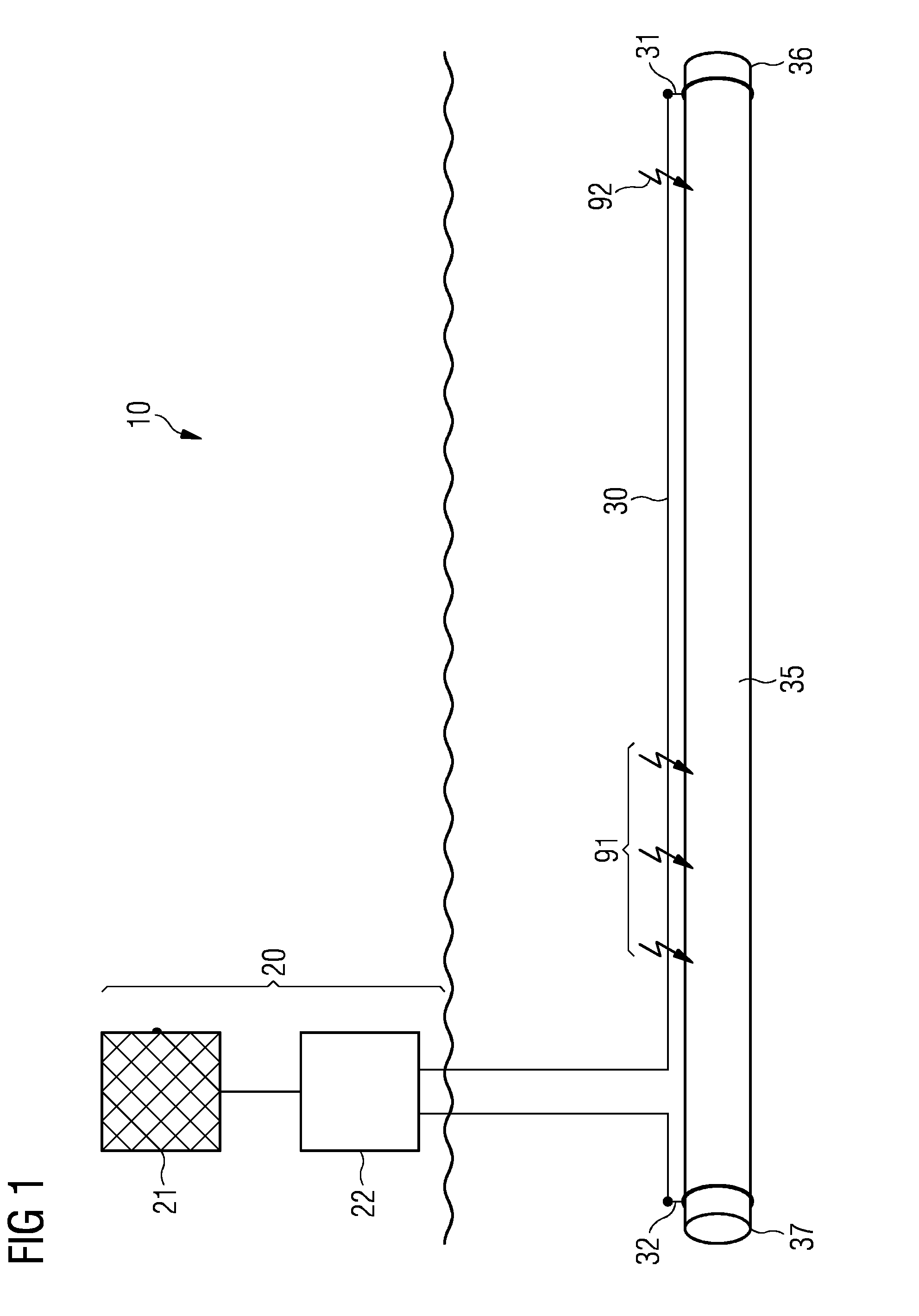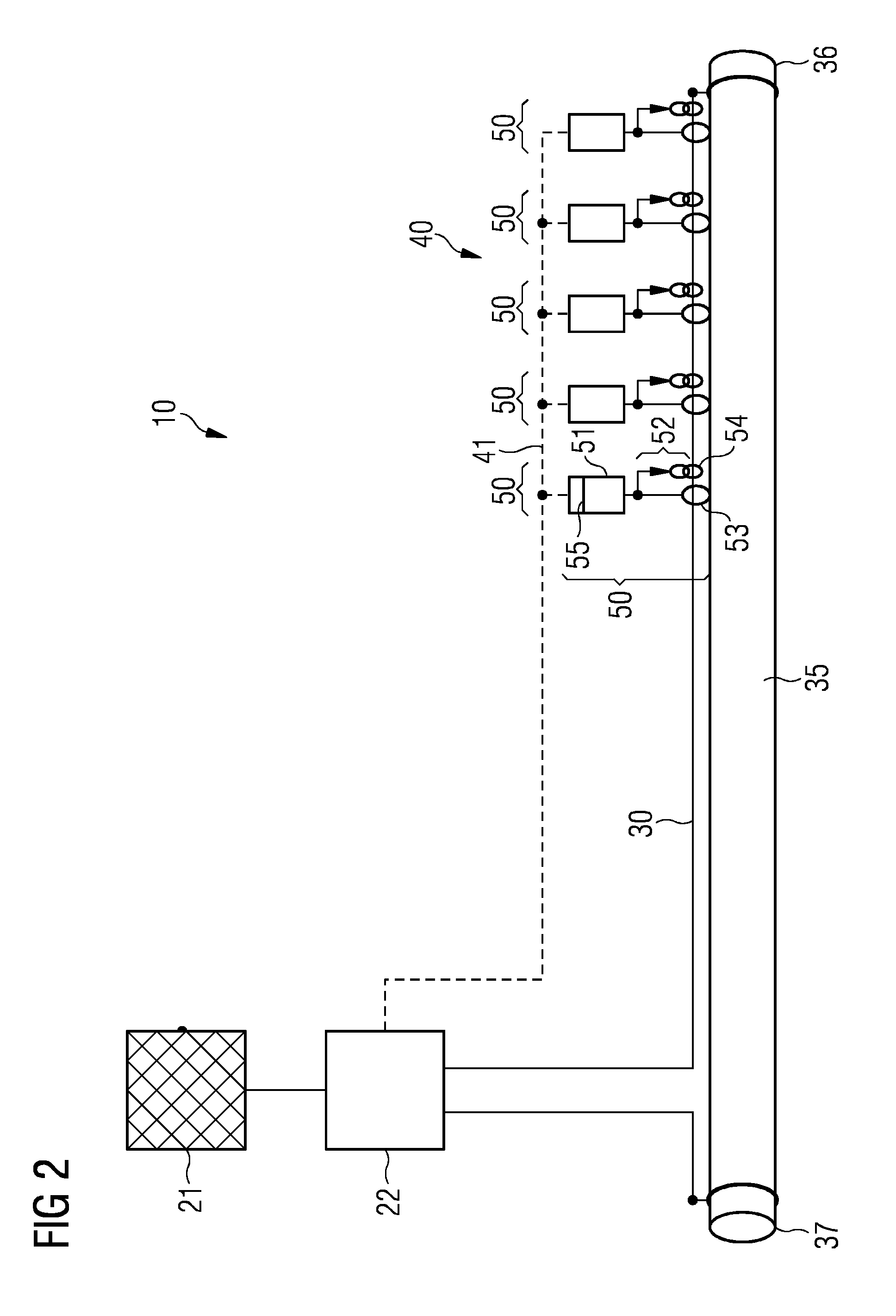Fault Detection in Subsea Power Cables
a technology of subsea power cables and fault detection, which is applied in the direction of fault location by conductor type, measurement devices, instruments, etc., can solve the problems of reducing the detection and finding of faults in medium to high voltage subsea cables, restricting the flow, and forming hydrates, so as to improve the detection of faults
- Summary
- Abstract
- Description
- Claims
- Application Information
AI Technical Summary
Benefits of technology
Problems solved by technology
Method used
Image
Examples
Embodiment Construction
[0049]In the following, embodiments are described in detail with reference to the accompanying drawings. It is to be understood that the following description of embodiments is given only for the purpose of illustration and is not to be taken in a limiting sense.
[0050]It is noted that the drawings are schematic representations only, and elements in the drawings are not necessarily to scale with each other. Also, the coupling of physical or functional units as depicted in the drawings and described hereinafter does not necessarily need to be a direct connection or coupling, but may also be an indirect connection or coupling, e.g., a connection or a coupling with one or more additional intervening elements. A skilled person will further appreciate that the physical or functional units illustrated and described herein with respect to the different embodiments do not necessarily need to be implemented as physically separate units. One or more physical or functional blocks or units may b...
PUM
 Login to View More
Login to View More Abstract
Description
Claims
Application Information
 Login to View More
Login to View More - R&D
- Intellectual Property
- Life Sciences
- Materials
- Tech Scout
- Unparalleled Data Quality
- Higher Quality Content
- 60% Fewer Hallucinations
Browse by: Latest US Patents, China's latest patents, Technical Efficacy Thesaurus, Application Domain, Technology Topic, Popular Technical Reports.
© 2025 PatSnap. All rights reserved.Legal|Privacy policy|Modern Slavery Act Transparency Statement|Sitemap|About US| Contact US: help@patsnap.com



